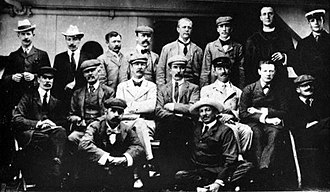
The Second Boer War, also known as the Boer War, Anglo–Boer War, or South African War, was a conflict fought between the British Empire and the two Boer republics over the Empire's influence in Southern Africa.
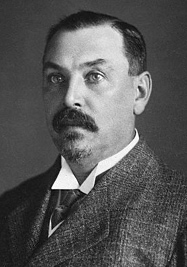
Louis Botha was a South African politician who was the first prime minister of the Union of South Africa – the forerunner of the modern South African state. A Boer war veteran during the Second Boer War, he eventually fought to have South Africa become a British Dominion.

Ladysmith is a city in the Uthukela District of KwaZulu-Natal, South Africa. It lies 230 kilometres (140 mi) north-west of Durban and 365 kilometres (227 mi) south-east of Johannesburg. Important industries in the area include food processing, textiles, and tyre production. Ladysmith is the seat for both the Alfred Duma Local Municipality and Uthukela District Municipality.

The siege of Mafeking was a 217-day siege battle for the town of Mafeking in South Africa during the Second Boer War from October 1899 to May 1900. The siege received considerable attention as Lord Edward Cecil, the son of the British prime minister, was in the besieged town, as also was Lady Sarah Wilson, a daughter of the Duke of Marlborough and aunt of Winston Churchill. The siege turned the British commander, Colonel Robert Baden-Powell, into a national hero. The Relief of Mafeking, while of little military significance, was a morale boost for the struggling British.

General Sir Redvers Henry Buller, was a British Army officer and a recipient of the Victoria Cross, the highest award for gallantry awarded to British and Commonwealth forces. He served as Commander-in-Chief of British Forces in South Africa during the early months of the Second Boer War and subsequently commanded the army in Natal until his return to England in November 1900.

The Union-Castle Line was a British shipping line that operated a fleet of passenger liners and cargo ships between Europe and Africa from 1900 to 1977. It was formed from the merger of the Union Line and Castle Shipping Line.

Lieutenant-Colonel Sir John Peniston Milbanke, 10th Baronet, VC was a British Army officer, and a recipient of the Victoria Cross, the highest award for gallantry in the face of the enemy that can be awarded to British and Commonwealth forces.

Sir Donald Currie was a Scottish shipowner, politician and philanthropist.
The Battle of Dakar, also known as Operation Menace, was an unsuccessful attempt in September 1940 by the Allies to capture the strategic port of Dakar in French West Africa. It was hoped that the success of the operation could overthrow the pro-German Vichy French administration in the colony, and be replaced by a pro-Allied Free French one under General Charles de Gaulle.

Sir Abraham Bailey, 1st Baronet, known as Abe Bailey, was a South African diamond and gold tycoon, politician, financier and cricketer.
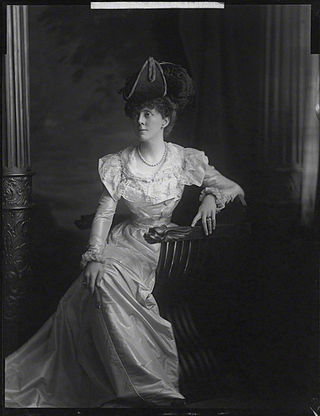
Lady Sarah Wilson DStJ RRC became one of the first woman war correspondents in 1899, when she was recruited by Alfred Harmsworth to cover the Siege of Mafeking for the Daily Mail during the Second Boer War.

London to Ladysmith via Pretoria is a book written by Winston Churchill. It is a personal record of Churchill's impressions during the first five months of the Second Boer War. It includes an account of the Relief of Ladysmith, and also the story of Churchill's capture and dramatic escape from the Boers. The book was first published in 1900, and dedicated to the staff of the Natal Government railway.
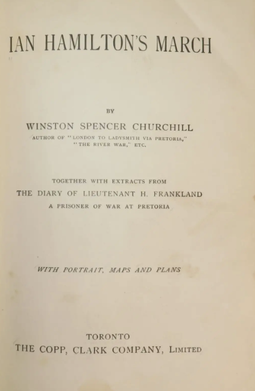
Ian Hamilton's March is a book written by Winston Churchill. It is a description of his experiences accompanying the British army during the Second Boer War, continuing after the events described in London to Ladysmith via Pretoria.

When the Second Boer War broke out on 11 October 1899, the Boers had a numeric superiority within Southern Africa. They quickly invaded the British territory and laid siege to Ladysmith, Kimberley and Mafeking. Britain meanwhile transported thousands of troops both from the United Kingdom itself and from elsewhere in the Empire and by the time the siege of Ladysmith had been lifted, had a huge numeric superiority.
The South African Light Horse regiment of the British Army were raised in Cape Colony in 1899 and disbanded in 1907.

Belmond Mount Nelson Hotel is a luxury hotel situated in the Gardens neighbourhood in inner-city Cape Town in a garden estate overlooked by Table Mountain.

The Jubilee class were a group of five passenger and cargo ocean liners built by Harland and Wolff at Belfast, for the White Star Line, specifically for the White Star Line's service from the UK to Australia on the Liverpool–Cape Town–Sydney route. The five ships in order of the dates they entered service were:
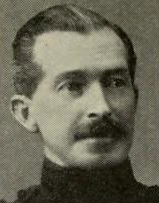
Lieutenant-Colonel Gordon Chesney Wilson was a British Army officer and husband of the war correspondent Lady Sarah Wilson. As an Eton College student he assisted in thwarting Roderick Maclean's assassination attempt on Queen Victoria in 1882, before joining the Royal Horse Guards in 1887. Wilson was promoted quickly, and as a captain was appointed aide-de-camp to Robert Baden-Powell at the start of the Second Boer War, in which role he served through the Siege of Mafeking. He was created a Member of the Royal Victorian Order in 1901.
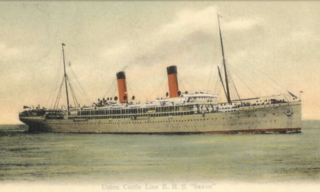
The RMS Saxon was a Royal Mail Ship that went into service with Castle Line in 1900 on the passenger and mail service run between Britain and South Africa. She was the 4th ship by this name, the first being a coal carrier dating back to the Crimean War. After the Boer War, the Saxon was one of nine ships that made up the Southampton-Cape Town Mail Run. In May 1901, the High Commissioner of South Africa, Lord Alfred Milner, traveled aboard the Saxon on his way back to Southampton, England. He traveled on the same route aboard the Saxon in 1925, shortly before his death.

The RMS Kildonan Castle was a Royal Mail Ship and passenger liner that went into service with Castle Line, and its successor, the Union-Castle Line. She was built to run the mail route from Southampton, England to Cape Town, South Africa starting in 1900. However, she began her life early, in December 1899, being requisitioned by the government to carry 3,000 troops to Cape Town at the start of the Boer War, and was temporarily used in South Africa to house POW's. She returned to England in 1901 for an outfitting to carry passengers and mail. She was one of nine ships on the England-South Africa run. At the outbreak of World War I, she replenished the South African Army with arms and ammunition. She also served as a hospital ship during the Dardanelles Campaign, outfitted with 603 beds, and converted in March 1916 to an armed merchant cruiser. In January 1917, she took Lord Milner and 51 VIP delegates from England, France and Italy to Murmansk, Russia, on the Petrograd Mission. She then undertook convoy duties in the North Atlantic, returning to her normal South African mail run after the war.


